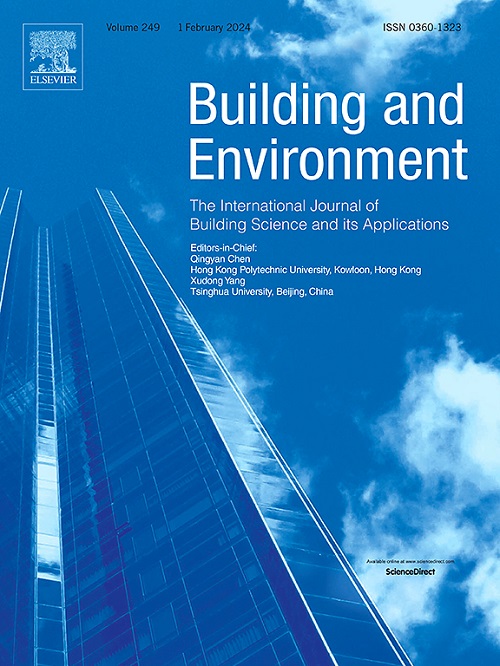Evaluating common supply air temperature setpoint reset strategies with varying occupancy patterns and behaviours
IF 7.1
1区 工程技术
Q1 CONSTRUCTION & BUILDING TECHNOLOGY
引用次数: 0
Abstract
The supply air temperature (SAT) setpoint of a multi-zone variable air volume (VAV) air handling unit (AHU) systems significantly affects the system’s performance. ASHRAE Guideline 36 introduces a so-called trim and respond logic defining the SAT reset behaviour of these systems. The trim and respond logic for SAT reset relies on demand-based feedback. Many studies have assessed ASHRAE Guideline 36, however there is a literature gap in addressing the performance of the trim and respond SAT reset with varying occupancy patterns and behaviours. This paper studies four SAT reset strategies under different thermal preferences and irregular occupancy patterns: (1) constant 13°C SAT, (2) SAT reset based on outdoor air temperature (OAT), (3) trim and respond, and (4) trim and respond combined with OAT reset. Different cases of zone-level setpoints and irregular occupancy schedules have been simulated in EnergyPlus with the studied SAT setpoint reset methods. The results show that varying setpoints across different zones lead to higher energy use with all studied SAT reset strategies. The highest variation in energy use was accompanied with constant SAT, with a standard deviation of 16 , and the highest variation in averaged discomfort fraction was accompanied with OAT reset, with a standard deviation of 5.3%. Both trim and respond methods achieved better comfort results with varying setpoints. These findings establish a basis for future work on developing a SAT reset strategy that utilizes occupant-centric control (OCC) that optimally balances thermal comfort and energy use.
评估不同占用模式和行为下的普通送风温度设定点重设策略
多区变风量(VAV)空气处理机组(AHU)系统的送风温度(SAT)设定点会对系统性能产生重大影响。ASHRAE 指南 36 引入了所谓的 "调整和响应逻辑",定义了这些系统的 SAT 复位行为。SAT 复位的调整和响应逻辑依赖于基于需求的反馈。许多研究都对 ASHRAE 准则 36 进行了评估,但在研究不同占用模式和行为下的微调和响应 SAT 重置性能方面还存在文献空白。本文研究了不同热偏好和不规则占用模式下的四种 SAT 重置策略:(1)恒定 13°C SAT,(2)基于室外空气温度(OAT)的 SAT 重置,(3)微调和响应,以及(4)微调和响应与 OAT 重置相结合。利用所研究的 SAT 设定点重置方法,在 EnergyPlus 中模拟了区域级设定点和不规则占用时间表的不同情况。结果表明,在所有研究的 SAT 重置策略中,不同分区的设定点变化会导致更高的能耗。恒定 SAT 的能耗变化最大,标准偏差为 16 kWh/m2,OAT 重置的平均不适度变化最大,标准偏差为 5.3%。在设定点变化的情况下,微调法和响应法都能获得更好的舒适度。这些研究结果为今后开发 SAT 重置策略奠定了基础,该策略利用了以居住者为中心的控制(OCC),能够优化热舒适度和能源使用之间的平衡。
本文章由计算机程序翻译,如有差异,请以英文原文为准。
求助全文
约1分钟内获得全文
求助全文
来源期刊

Building and Environment
工程技术-工程:环境
CiteScore
12.50
自引率
23.00%
发文量
1130
审稿时长
27 days
期刊介绍:
Building and Environment, an international journal, is dedicated to publishing original research papers, comprehensive review articles, editorials, and short communications in the fields of building science, urban physics, and human interaction with the indoor and outdoor built environment. The journal emphasizes innovative technologies and knowledge verified through measurement and analysis. It covers environmental performance across various spatial scales, from cities and communities to buildings and systems, fostering collaborative, multi-disciplinary research with broader significance.
 求助内容:
求助内容: 应助结果提醒方式:
应助结果提醒方式:


